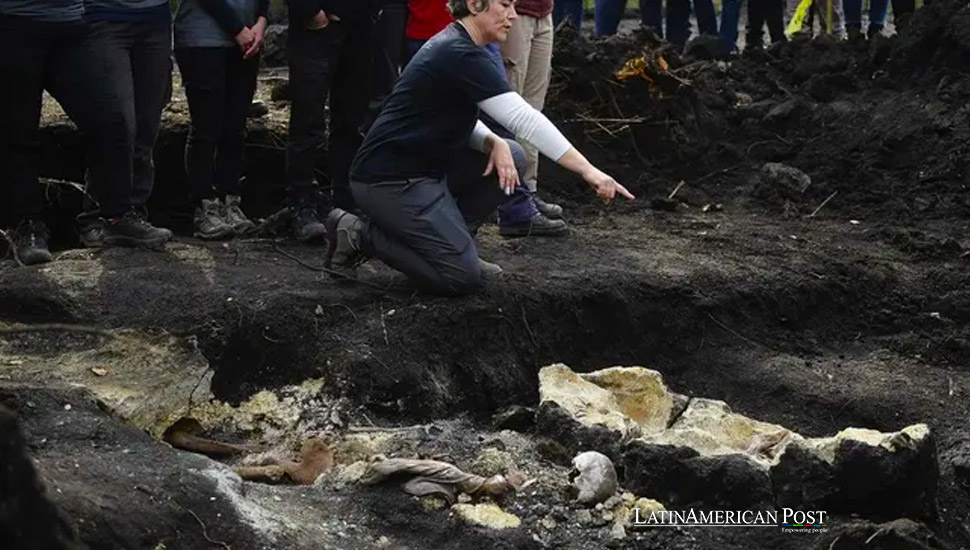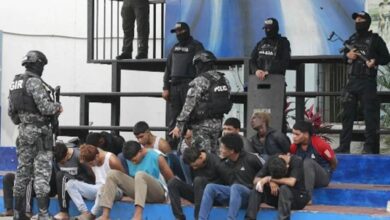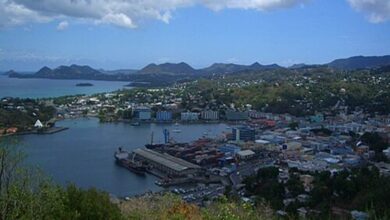Uncovering Uruguay’s Dark Past as Dictatorship-Era Remains Found

Human remains discovered at a Uruguayan army battalion may belong to a victim of the country’s 1973-1985 civic-military dictatorship, shedding light on the ongoing search for those who disappeared during this dark chapter in Uruguay’s history.
On July 30, 2024, human remains were unearthed at Batallón 14, an army battalion in Uruguay, reigniting painful memories of the country’s brutal civic-military dictatorship that lasted from 1973 to 1985. The discovery was made just 170 meters from where, in June 2023, the remains of Amelia Sanjurjo Casal, a militant who disappeared in 1977, were found. This latest find is a stark reminder of the many individuals who vanished during that era, their fates unknown, their families left in agonizing uncertainty.
The remains, identified as those of a man between the ages of 43 and 57, were discovered in what experts describe as a “primary and individual” burial site. The body was found face down and covered in lime, a method commonly used to accelerate decomposition and obscure the identity of victims. The site was located 90 centimeters deep in the ground, and the burial pattern bore similarities to other remains found in the same area, suggesting a systematic approach used during the dictatorship to dispose of bodies.
The Dark Period of Uruguay’s Civic-Military Dictatorship
The civic-military dictatorship that ruled Uruguay from 1973 to 1985 was one of the most repressive regimes in Latin America. During this period, thousands of Uruguayans were arrested, tortured, and disappeared, their fates concealed by a government determined to suppress any opposition. The dictatorship was part of a broader wave of military rule that swept across the continent, with regimes in Argentina, Chile, and Brazil engaging in similar tactics of state-sponsored terror.
In Uruguay, Batallón 14 and other military facilities became notorious for their role in the repression. These sites were often used as detention centers where prisoners were subjected to brutal interrogation methods, and many were never seen again. The discovery of human remains at these sites is a poignant reminder of the systematic violence that characterized the dictatorship and the enduring pain it has left in its wake.
The dictatorship ended in 1985, but the scars it left on the nation remain deep. For decades, families of the disappeared have sought answers, demanding justice and the return of their loved ones’ remains. The recent discoveries at Batallón 14 are part of this ongoing effort to uncover the truth and hold those responsible accountable.
The Forensic Investigation and Genetic Analysis
Following discovering the remains, a team of experts, including anthropologist Alicia Lusiardo from the National Human Rights Institution, conducted a detailed forensic investigation. During a press conference on August 1, Lusiardo provided preliminary details about the remains, noting that they belonged to a male with an estimated height of between 1.75 and 1.85 meters. However, she cautioned that these findings are not conclusive and that the final identification will depend on genetic analysis.
The genetic sample from the remains is scheduled to be taken on August 20 and will be sent to a specialized laboratory in Córdoba, Argentina. This analysis is crucial in determining the identity of the individual and providing closure to a family that has waited decades for answers. The process of identification is meticulous, involving comparisons with DNA from relatives of the disappeared, and can take several months.
The use of forensic science has been instrumental in the search for truth and justice in Uruguay. Over the years, advances in technology have allowed for the identification of remains that were previously unrecognizable, offering new hope to families. However, the process is also a somber reminder of the many who remain missing and the slow progress in bringing them home.
The Ongoing Search for Justice
The discovery of human remains at Batallón 14 is not just a historical revelation; it is also a call to action. The remains found here, and at other sites, are evidence of the crimes committed during the dictatorship and underscore the need for continued efforts to hold those responsible to account. While Uruguay has made strides in addressing its past, including the establishment of the National Human Rights Institution and other initiatives, many believe that more must be done to achieve full justice.
For the families of the disappeared, the search for their loved ones is a personal and collective struggle. Organizations representing these families have long advocated for the government to intensify its efforts to locate and identify the remains of the disappeared, as well as to prosecute those involved in their disappearance. Each discovery, like the one at Batallón 14, brings a mix of emotions—relief that a loved one has been found, but also renewed pain as the reality of their loss is confirmed.
The Uruguayan government, under pressure from human rights groups and international bodies, has committed to continuing the search for the disappeared. However, the process is fraught with challenges, including the passage of time, the destruction of records, and the reluctance of some to come forward with information. Despite these obstacles, the determination of those seeking justice remains strong, driven by the belief that uncovering the truth is essential for healing the nation.
Also read: Uruguay’s Push for Progress in Lacalle Pou’s Final Year
The history of Uruguay’s civic-military dictatorship is a dark chapter that continues to cast a long shadow over the country. The discovery of human remains at Batallón 14 is a powerful reminder of the atrocities committed during this period and the ongoing efforts to bring justice to those who suffered. As the investigation into these remains continues, it is hoped that they will provide answers to one more family and contribute to the broader quest for truth and reconciliation in Uruguay.





